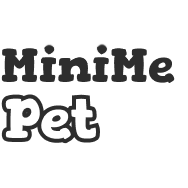You’ve just brought your adorable pup home for the first time! But how, and when, do you get started on training?
So, you’ve just welcomed the newest addition to your family – a cute and cuddly puppy. Those big, soulful eyes, the wagging tail, and the boundless energy can melt your heart in an instant. But along with all that cuteness comes the responsibility of training your fur baby to be the best companion they can be.
So, let’s get into it and start … Right now!
The First Few Weeks at Home
Your puppy’s first few weeks at home are a crucial time for bonding and laying the foundation for future training. Focus on creating a loving and safe environment for your pup. Get them acquainted with their new surroundings, other family members, and even other pets if you have them.
Start basic obedience right away with simple commands like “sit,” “stay,” and “come.” Keep training sessions short and sweet, and be patient – your puppy is still learning how to dog!
Socialization: The Sooner, the Better
Socialization is a fancy word for helping your pup become comfortable and well-adjusted around other dogs, people, and different situations. The critical window for socialization is between 3 and 14 weeks of age, so don’t wait to start this essential training aspect.
Take your pup on short outings to meet new people, visit different environments, and interact with other dogs – provided both they and your pup are vaccinated. Puppy classes are a fantastic way to ensure your fur baby learns to play well with others.
House Training: Set a Routine
House training can be a bit messy, but with a consistent routine, it can become a breeze. As soon as your puppy arrives home, establish a schedule for feeding, toilet breaks, and playtime. Always take your pup out after meals, naps, and play to reduce the chances of accidents indoors. Remember to praise your pup enthusiastically when they do their business outside.
Chew Toy and Crate Training
Puppies love to chew – it’s a natural instinct. To save your furniture and shoes, provide your pup with plenty of appropriate chew toys. When they choose the right object to gnaw on, shower them with praise.
Crate training is an excellent way to keep your pup safe when you can’t supervise them. Make the crate a comfortable and inviting space with cozy bedding and some of your pup’s favorite toys. Avoid using the crate as a form of punishment, and remember to let your pup out for regular bathroom breaks.
Basic Manners: Start Young
As your puppy grows and becomes more familiar with their surroundings, start incorporating basic manners into your training regimen. These include teaching them to walk on a leash, greet guests politely, and respond to commands like “leave it” and “drop it.”
Remember to be patient, keep your training sessions short, and use positive reinforcement techniques. Consistency is key to helping your puppy understand what’s expected of them.
In Conclusion
The right time to start training your puppy is now! Early training will set the stage for a well-behaved and happy dog, and it’s also a fantastic way to bond with your furry companion. With patience, love, and consistency, you’ll be well on your way to having a perfectly trained pup who’s ready to explore the world with you.
Thanks for being one of the first ones here!
MiniMe Pet (the social app for pets!) is under active development and has been just released for iOS and Android.
We’re always looking for loving pet parents to work with and help with feedback for the initial release of our app!



